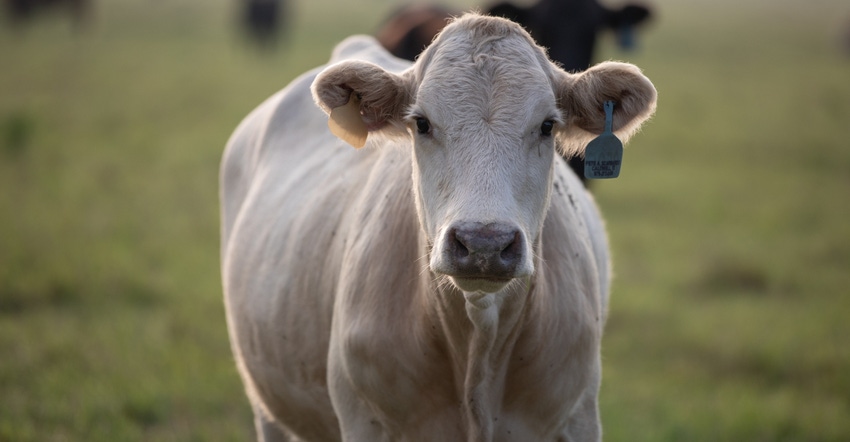Welcome to Health Ranch, where you can find information and resources to help you put the health and well-being of your cattle at the top of the priority list.
Pinkeye: Understanding the disease and prevention tactics
Detecting the first signs of pinkeye can help reduce the risk of developing permanent eye damage.
April 1, 2020

Sponsored Content
Progression of pinkeye
Affecting more than 10 million calves annually, pinkeye is a costly infection for both producers and cattle, putting infected animals at risk of lower growth rate, potential blindness and permanent damage, if left untreated.1
“Early detection of the disease process is one of the greatest challenges,” said DL Step, DVM, Boehringer Ingelheim. “The more the disease progresses, the more severe of an impact it can have. In extreme cases, infected cattle may never regain sight.”
When irritants cause damage to the cornea of the bovine eye, pinkeye pathogens (disease causing agents) attack the damaged cornea, resulting in four phases of infection:
Phase 1
Clinical signs of pinkeye begin with discoloration of the cornea and tearing up in an attempt to flush away the irritant. Due to inflammation, discoloration of the eye occurs, making the eye appear gray or slightly cloudy. In the center of the eye, a corneal ulcer will often appear. Further signs include fluttering eyelids, squinting and sensitivity to light.
To avoid the development of irreversible damage to the eye, it’s best to collect diagnostic samples for testing at the first signs of tearing up or irritation.
Phase 2
Existing clinical signs may intensify, making the eye appear cloudier from increased inflammation. The ulcer expands across the cornea, and blood vessels extend to the eye in an attempt to repair the damaged area, which causes redness (the source of the nickname “pinkeye”).
Phase 3
The ulcer begins to cover most of the cornea, as inflammation spreads to the inner part of the eye. The interior of the eye begins to fill with a pus-like substance.
Phase 4
With potential to cause damage to the iris, persistent swelling of the eye and glaucoma, the ulcer extends through the entirety of the cornea. The eye will be at least partially blind, and full blindness could occur if the eye ruptures.
Prevention
“Developing a customized preventive health program with your veterinarian is the most crucial step to reduce cases of pinkeye on your operation,” said Dr. Step.
As the summer months approach, there is typically an increase in pinkeye outbreaks. Flies are more prevalent during this time, and can easily transmit the bacteria that causes pinkeye from one animal to another. To reduce the risk of an outbreak, producers should check their cattle for clinical signs of pinkeye, such as excessive tearing, blinking, squinting and drainage from the eye, as often as possible.
The sooner pinkeye is detected, the better. Early detection with appropriate treatment reduces chances of the disease causing permanent eye damage. Beyond consistently monitoring cattle for pinkeye, there are many other preventive measures producers can put into action.
Dr. Step shares additional management practices, such as mowing pastures if possible to help eliminate chances of irritation from weeds or brush while cattle graze. He also recommends that producers deliver feed such as mixed rations or hay in a manner that minimizes the chances of dust and other particles from causing irritation to the eyes of cattle.
Vaccination Is key
“Ultimately, it’s better to prevent than treat,” added Dr. Step. “Proper vaccination for pinkeye protection is the best way to control the disease.”
Be sure to look for single-dose pinkeye vaccines to provide cattle full protection and give producers greater ease by eliminating the need for a booster shot.
Reference:
1 Snowder GD, Van Vleck LD, Cundiff LV, Bennett GL. Genetic and environmental factors associated with incidence of infectious bovine keratoconjunctivitis in preweaned beef calves. J Anim Sci 2005;83(3):507–518.
©2020 Boehringer Ingelheim Animal Health USA Inc., Duluth, GA. All Rights Reserved. US-BOV-0127-2020-A
About the Author(s)
You May Also Like
